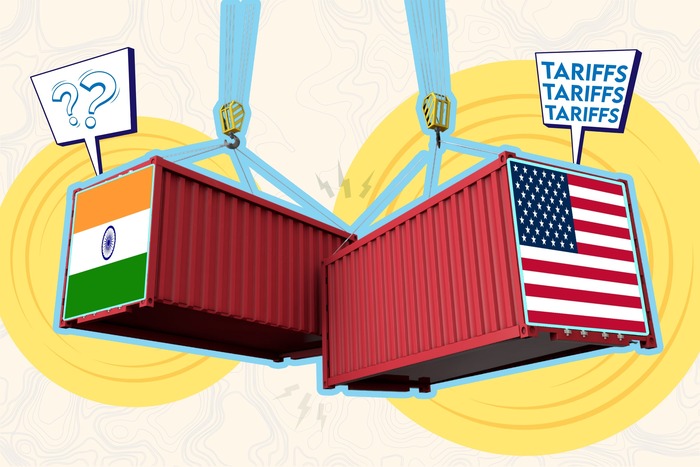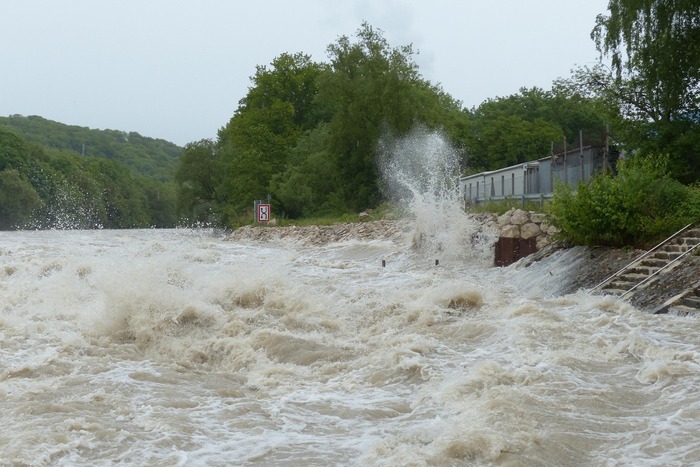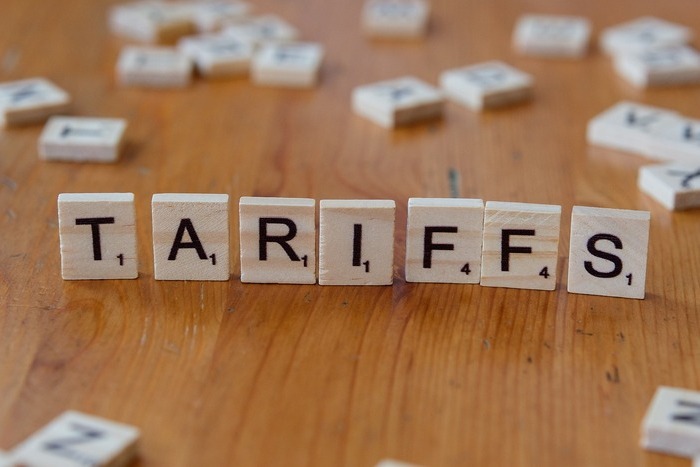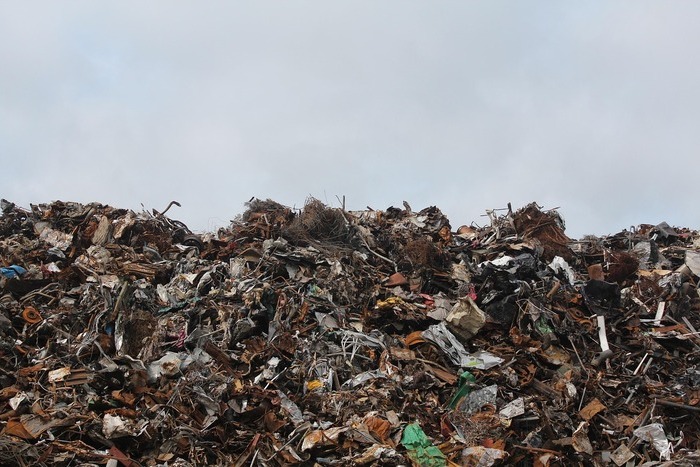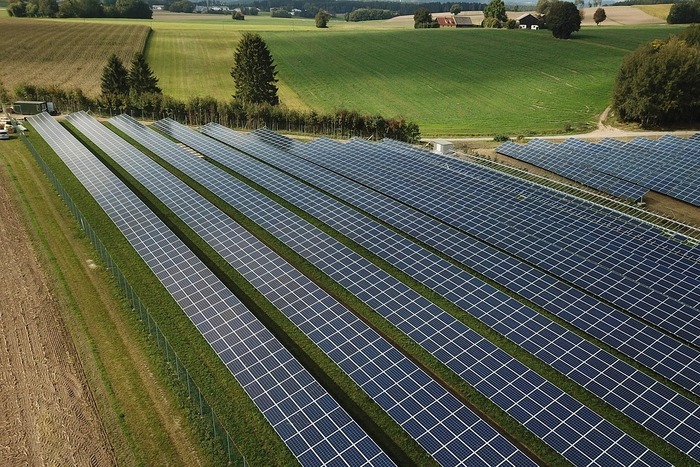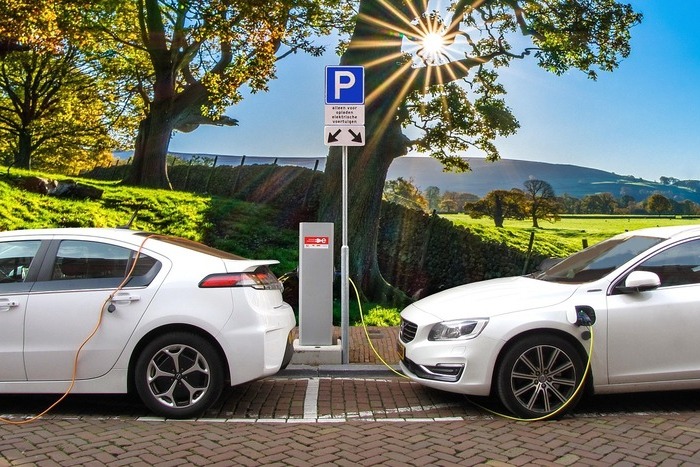
Visual by Riddhi Tandon
How should India respond to Trump’s tariff shock?
The country has to set short-term pain against the long-term costs of the trade concessions sought by the USA, and think creatively
In the second week of August, India entered a dramatically different world. Citing its import of Russian oil, US president Donald Trump imposed an additional 25% tariff on the country, effectively boosting the tariff on Indian exports to the USA by 50%.
His decision cut off Indian exporters in labour-intensive sectors such as textiles, seafood and footwear and high-value sectors like gems, jewellery and auto-components from the world’s largest consumer market and left others like pharma and IT services wondering if they would be next.
It also undid several foundational assumptions underpinning India’s foreign policy. The first of these was the claim that Indian Prime Minister Narendra Modi and Trump were close friends— and that their friendship would boost bilateral relations between the two countries. With the tariffs, however, the US-India relationship has slipped back several decades. “Suspicion between the two countries will get more entrenched after this,” said an investment banker working with a global FII (Foreign Institutional Investor).
Also in trouble are India’s efforts to position itself as a bulwark against China. “Geopolitically, we were in a sweet spot — as an alternative to China — which was supposed to push up our growth rate,” said the investment banker on the condition of anonymity. “That stands dented now. At this time, there is no panic, but FIIs are watching this very closely.”
Given such radical reconfigurations, India has been awash in opinions all of last week. Is Trump bluffing? Should the country seek detente with him? Or should it absorb these losses and boost trade elsewhere?
A time of turmoil
Trump has left a 21-day window before the additional 25% tariff comes into effect, creating speculation that these tariffs are no more than a negotiation tactic. This question, however, is less significant than it seems. For one, Trump might well be serious about these sanctions. “From what I know, the deal was nearly done from both sides,” the investment banker quoted above told CarbonCopy. “I think India’s rejection of his claims about brokering peace after Operation Sindoor rankled him.”
The other reason for the question’s relative insignificance is that even the 25% tariff is a body blow. With countries like Vietnam, South Korea, Taiwan, Indonesia and Bangladesh getting tariffs between 15% and 20%, almost all Indian exports to the USA will become unviable.
The costs extend from widespread job losses to an economic hit. Given the US was India’s top export market — accounting for 18% of the country’s (goods/merchandise) exports in 2023-24 and 2.2% of its GDP — even a 25% tariff could lower India’s GDP by 0.2-0.4%.
“We will survive, of course,” said the investment banker. “And yet, if 6% growth becomes 5.5% growth for some time, it is not good news.”
Should India offer trade concessions and resolve the issue?
With a clutch of other trading partners — like Indonesia, Japan and the EU — Trump dropped tariffs after the countries agreed to buy US goods. Indonesia’s tariff, for instance, fell from 32% to 19% after it agreed to buy $15 billion in US Energy, $4.5 billion in American agricultural products, and 50 Boeing Jets, many of them 777s. It also extended zero tariffs to US goods. As Trump told reporters after the deal:“For the first time ever, America’s ranchers, farmers, and fishermen will have complete and total access to the Indonesian market.”
With other trading partners, too, Trump has followed this template. The EU has agreed to buy energy and weapons. Trump also swung zero tariffs for US exports to Vietnam, while imposing 40% tariffs on goods transhipped through the country — a curb on Chinese exporters, mainly.
Should India follow suit? The country’s total exports (goods and services) to the USA stood at $86.51 billion (₹735,335 crore) in 2024-25, roughly a tenth of total exports ($824.9 billion, or ₹6,911,025 crore) that year. Of this ₹735,335 crore, according to India’s finance ministry, about 55% will be affected by US tariffs.
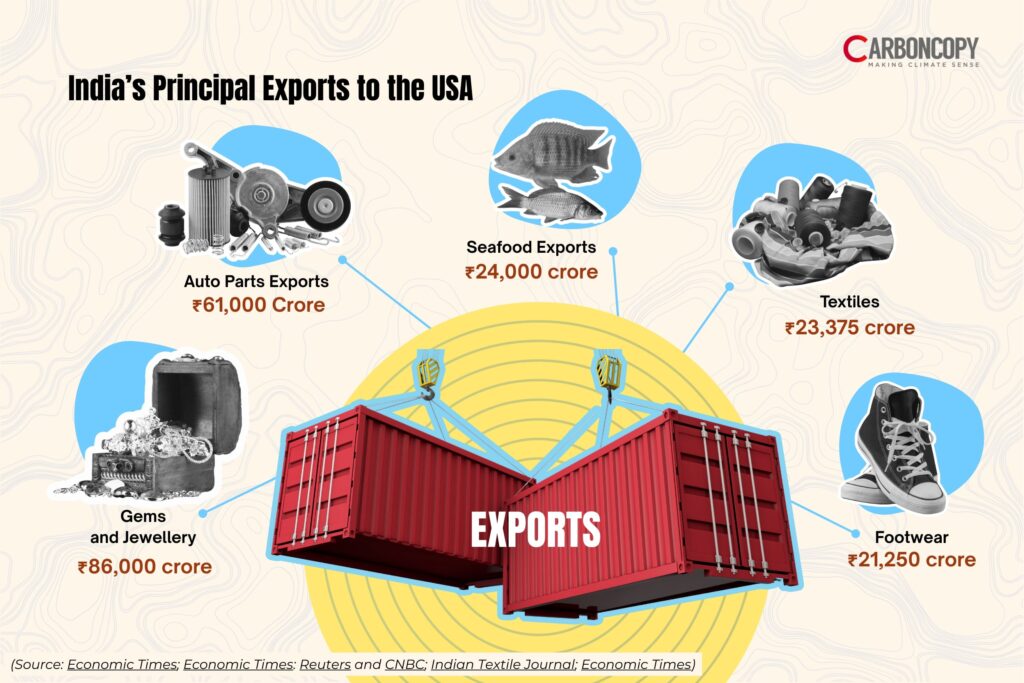
The immediate pain inflicted on these exporters, however, has to be measured against the longer-term costs of signing deals like the one Indonesia did.
In defence, Trump wanted to sell F35s to India. “The US wants us to buy 30-40 planes from them saying that is our trade deficit with them,” a veteran defence analyst had told this reporter earlier this year. “But we cannot take the F35. We already have the MIG, the Sukhoi, the Rafale and the Jaguar. We cannot add a fifth platform.”
Even in energy, questions about utility rear their head. As CarbonCopy has written earlier, imported gas is uncompetitive against the fuels it seeks to replace. Costlier to extract, shale gas is even more uncompetitive.
Take Tellurian. Between 2019 and 2023, the now-shuttered US shale gas manufacturer made multiple attempts — it even sponsored Howdy Modi — to sell 200 million tonnes of shale gas over 40 years to India. Even ignoring the $7.5 billion Tellurian sought as an investment from Indian PSU Petronet LNG, the deal worked out to a total payment of $62 billion over 40 years. At current prices, that would have translated to a net outflow of ₹527,000 crore. The deal, additionally, priced Tellurian’s gas at $6/MMBTU when spot prices were at $2/MMBTU — and the world was seeing a glut in LNG export terminals, raising questions on whether India should pick up equity in one.
Tellurian’s not an exception. India has also been forced to renegotiate its gas supply contracts with US shale gas manufacturers like Cheniere and Dominion. “The domestic appetite for expensive LNG is zero,” a retired Petroleum secretary told CarbonCopy. “For what we need, Qatar is cheaper.”
Look beyond weapons and energy — and the costs get larger yet. In agriculture, the US wants low tariffs on corn, soybeans, apples, cotton, almonds and ethanol plus market access for US’ genetically modified maize, soy, canola and cotton into India. Given that US farmers enjoy higher economies of scale — the average landholding in the US is 187 hectares; in India, 1.08 hectares — and greater state support, Indian farmers will struggle to compete with them. Accepting these demands, ergo, translates into both deepened precarity for Indians living off farming and allied activities — estimated at 54.6% of India’s total workforce— and the loss of food sovereignty.
And then, there is pharma. “It’s likely Trump will want the same concessions as the UK over pharma,” economist Jayati Ghosh told CarbonCopy, alluding to India’s recent FTA with the UK which promotes voluntary licenses (where a pharma company defines the terms under which a generic version of a patented medicine can enter the market from alternate suppliers, undermining access to patents) over compulsory ones (where governments can authorise production even without the patent holder’s consent).
It’s a gigantic concession. “Particularly in contexts such as the drug-resistant tuberculosis (DR-TB) public health emergency or the 2020 COVID-19 pandemic, the decision to enable manufacture and sale of more affordable versions of urgently needed medicines must not be left to voluntary, “business as usual” commercial practices,” Medicins Sans Frontieres has said.
The litany of costs run deeper yet. In its deal with the USA, Indonesia will also remove all content requirements for US-made goods and accept American vehicle-safety and emissions standards. It must also recognize Food and Drug Administration approvals for medical devices and pharmaceuticals, exempt US food and agricultural imports from local licensing regimes, and accept US certifications for meat, dairy, and poultry products. In addition, the country, as Ghosh wrote, “has also agreed to eliminate tariffs on intangible goods and support a global moratorium on digital customs duties – issues that remain highly contested within the World Trade Organization”.
That is the calculus of this moment. Trump is using tariffs not just to boost US manufacturers’ access to foreign markets and to sell military hardware, he is also forcing other countries into trade agreements which, as with colonialism and neo-colonialism, are extractive (like the Ukraine critical minerals deal) or impinge on citizens’ wellbeing (as with the farm deals).
Trump has weaponized tariffs not just to extract trade concessions but also to bind other countries (including India) more closely to U.S. strategic and security interests, including by pressing them to boost defense spending and purchase more US weapons.https://t.co/TQ7UfZ4tn0
— Dr. Brahma Chellaney (@Chellaney) August 9, 2025
In the days after Trump announced his punitive tariffs, Modi said he wouldn’t compromise on farmers’ interest. And yet, as Ghosh told CarbonCopy, “The farmers are just the baseline. We cannot yield anywhere else either.”
This is one (big) reason why India shouldn’t rush to the negotiating table. There are yet others. “The 50% tariff comes with exemptions,” she said. “Apple already has one. As tariffs start to bite, American companies will lobby for relaxations.” It’s also possible that, as the USA slips into a slowdown — Wal-Mart has already begun raising prices — Trump will weaken after the US midterm polls in November 2026. Or he might just change his mind.
What India should do instead
India has to pick its cues from not Indonesia, but Mexico and Brazil. After getting slapped with high tariffs, Mexico and Brazil (50%) responded by seeking alternative trading partners. Countries in the Caribbean and Africa are doing the same. “This is now a multipolar world,” said Ghosh. “We have to hedge. We cannot be excessively reliant on any one partner. We have to make new friends and look for new openings.”
For decades now, India has been exporting 100cc motorcycles, cheap medicines (like Cipla) and buses to developing countries. “We should take the hit and look at other options,” she said. “We should become a manufacturing base for the developing world. The costs of doing anything else are too high.”
Can the country compete with China in those markets? In the days after Trump’s second tariff broadside, Modi told Indians to buy locally manufactured goods. For this to work, however, India has to tackle widening precarity. “If we boosted India’s median income by 5%, we would have a much larger domestic market,” said Ghosh. A large domestic market, she said, will also make the country’s exports more competitive. “China used its domestic market to create scale for its manufacturers,” she said. “Which is why we need urban employment schemes on the lines of MGNREGA [Mahatma Gandhi National Rural Employment Guarantee Act, 2005].” The country also needs to revitalise its Micro, Small and Medium Enterprises (MSMEs) — and use them to drive growth. It also needs to start investing afresh in R&D.
The elephant in this room is China. India urgently needs to decarbonise and most of those technologies are owned by China. The country is also the biggest supplier of bulk drugs to India’s pharma sector. India-China relations, however, are rocky right now. China is not just helping Pakistan, it’s also cutting off India’s access to technology.
Endgame
Put it all together and it’s clear that India needs a fairly fundamental reset. Instead of seeking short-term relief at the cost of longer-term pain, it has to redo its relationship with the BRICS nations and the Global South into something more constructive, as opposed to allying with Israel and the USA to sell weapons to developing countries.
On energy, it has to mend bridges with China and double down on oil and gas purchases from past suppliers. “We will probably swing back to the Middle East countries,” said the former petroleum secretary. “The government has said it will let oil companies take these calls — which is then a function of price.”
What complicates this picture is the increasing subservience of foreign policy to domestic politics. “The relationship between Trump and Modi is over,” said the former petroleum secretary. “The QUAD [Quadrilateral Security Dialogue] is over as well. We have to mend relations with China. But domestic politics has its own compulsions.”
At this time, it’s not clear what India is thinking. In the weeks before Trump’s tariff shock, India’s oil companies were in talks with US shale gas exporters. In the days that followed, officials were weighing trade concessions they could offer the USA. In tandem, however, the country paused plans to buy arms from the USA.
Hardwired into this moment is that old Chinese adage about each crisis also being an opportunity. India has a chance to reimagine its trade relationships and its place in a reorganising world.
Red alert have been issued in Uttarakhand, Telangana, and Bihar for heavy rainfall. Photo: Pixabay
Red Alert For Heavy Rainfall In Uttarakhand, Telangana, Bihar & Coastal Andhra Pradesh
The India Meteorological Department (IMD) issued a red alert for extremely heavy rainfall in Uttarakhand, Bihar, Telangana and Coastal Andhra Pradesh today. Senior IMD scientist Dr. R K Jenamani said heavy to very heavy rainfall is likely over Odisha, Chhattisgarh, East Madhya Pradesh and parts of North East India, AIR reported.
The weather department also forecast thunderstorms accompanied by “lightning and gusty winds at isolated places over Andaman and Nicobar Islands, Chhattisgarh, North Interior Karnataka and Vidarbha,” the public broadcaster said.
Temperatures cross 40°C in southern Europe, Spain wildfires ‘clear warning’ of climate emergency, says minister
Southern Europe is facing a “deadly” heatwave, with temperatures of up to 44°C, according to the Guardian. The heatwave-fuelled wildfires killed two people in Spain. The country’s environment minister said the blazes are proof of the country’s vulnerability to global heating. Aagesen’s comments came a day after temperatures in parts of southern Spain surged past 45°C (113°F), the Guardian reported. Bloomberg reported that “Electricite de France SA was forced to shut four atomic reactors after a swarm of jellyfish clogged up filter drums at its Gravelines power plant”.
66 missing in Uttarakhand flash floods
A week after flash floods hit Dharali village in Uttrakhand, at least 66 people are still missing, BBC reported citing official statement. Only one body has been recovered so far, the statement added, revising an earlier death toll of four.
Flash floods on Tuesday hit Dharali village burying entire buildings, roads, trees and plantations, satellite images taken two days after the disaster show, HT reported. The National Institute of Disaster Management (NIDM) identified a glacial lake upstream of the Kheer Ganga river, which experts said may have been set off by a glacier collapse. However, NIDM did not confirm that glacial lake outburst flood (GLOF) could be the cause of the disaster, the newspaper said.
This hypothesis, NIDM said, is based purely on “remote sensing and topographical analysis.”
“High-resolution imagery, in-situ field surveys to confirm moraine stability and sediment dynamics, and hydrological modeling will be essential to validate or rule out the role of this glacial lake,” it added.
Uttarkashi disaster highlights trade-offs for construction, around 13,000 more trees to be felled?
Uttarakhand flash floods and landslides, in the heart of the Bhagirathi Ecosensitive Zone (BESZ) have yet again highlighted the trade-offs involved in the construction of the final stretch of the Char Dham road, HT reported. The outlet added that “the forest clearance for the stretch between Tekhla and Badethi has been pending since December last year. Constructing this stretch will involve the felling of 530 trees.” Data available on the ministry’s website added that a key concern is the need to protect the forests and green cover in the BESZ.
The newspaper cited a government website saying: “It requires minimal cutting of trees in the BESZ for road construction and avoiding multiple roads connecting a village to the state or national highways. …The plan for widening this stretch will fell 12,995 trees in the BESZ. Almost 6,000 deodar trees are to be felled between Jhala and Gangotri, Bhatt had pointed out that in the latter stretch,” the annexures state, adding that the count of trees to be felled is sourced from a submission on record by Union ministry of road transport and highways (MoRTH).
The outlet reported that residents are particularly concerned that conditions recommended by the Supreme Court appointed high powered committee on the Char Dham project in respect of the stretch of around 100 km connecting Uttarkashi to Gangotri and passing through the Bhagirathi Eco-Sensitive Zone, have been ignored.
Critical minerals may face shortages under 2°C pathways: Study
As many as 13 critical minerals for low-carbon energy may face shortages under 2°C pathways “if progress in intensity reduction and recycling efficiency remains conservative”, reported a new study published by Nature.
Scientists analysed 557 mitigation pathways from the Intergovernmental Panel on Climate Change Sixth Assessment Report using the Global Resource Evaluation of Abatement Technologies model, to systematically quantify demand and potential shortages for 40 minerals critical to 17 energy technologies.
They found that all pathways may experience global shortages of up to 12 minerals by 2100 under the moderate scenario, with more severe shortages of indium, tin, cadmium and tellurium related to thin-film photovoltaic, wind and nuclear power (>50% of pathways).
Regional disparities would intensify these risks, particularly in developing, resource-vulnerable regions (for example, the Middle East and Africa), with potential shortages reaching 24 minerals, scientists said. The researchers said “decarbonization requires more than technological innovation. It demands the strategic integration of diversified energy technology portfolios, aggressive recycling, material substitution and global trade cooperation, alongside moderate gross domestic product growth.”
Drough-heatwave: Rice yields in south-east Asia will “drop sharply” by end of century
A new study found compound drought–heatwaves (CDHW) have seriously threatened the agricultural industry, mainly rice crops in Southeast Asia. Scientists investigated the projected changes in CDHWs and rice yield in the region, and further examined the potential driving factors behind extreme weather on yield. Results indicated a projected 550% increase in the annual occurrence of drouth-heatwave, which correlates significantly with a 27% decrease in rice yield by the end of the 21st century. Vapor pressure deficit (VPD) emerges as a major factor contributing to the reduction in rice yield drouth-heatwave events.
Australia: Great Barrier Reef suffers biggest annual drop in live coral since 1980s after devastating coral bleaching
A new report found that the Great Barrier Reef suffered “its biggest annual drop in live coral in two out of three areas monitored by scientists since 1986”.
Western Australia’s coast has “suffered the worst bleaching on record after the state’s ‘longest, largest and most intense’ marine heatwave”, BBC News reported. It added: “The damage – which will take months to assess – spans 1,500km and includes areas previously unscathed by climate change. Coral reefs worldwide have been suffering from a two-year-long global coral bleaching event, due to record high ocean temperatures.”
The Guardian reported that over 100 scientists and marine managers will gather in Perth on Tuesday for a special meeting to discuss the devastating event that bleached and killed corals on remote reefs earlier this year. The marine heatwave that hit reefs from the world heritage-listed Ningaloo to the remote Ashmore Reef left many scientists shocked, the newspaper said.
Trump to double India's tariff to 50% on Russian Oil Imports. Photo: Pixabay
Trump to double India’s tariff to 50% over Russian oil purchases
American President Donald Trump doubled tariffs to 50% on India. After the new tariffs, India has been “a bit recalcitrant” in trade negotiations with Washington, US Treasury Secretary Scott Bessent said on Tuesday, The Indian Express reported. India called the US move “unjustified and unreasonable.” The new tariffs were seen as a “punishment” for the country buying Russian oil, the New York Times reported. The newspaper said: “Under a new executive order, India would face a 25% tariff starting on 27 August if it continues to buy oil from Russia. That would be in addition to a 25% duty that Trump announced last week, citing unfair trade barriers, which he plans to implement beginning Thursday.”
India’s foreign ministry responded to Trump’s announcement, “reiterating that its motives for importing oil from Russia were tied to the energy needs of its 1.4 billion people”. The government’s statement said:“It is, therefore, extremely unfortunate that the US should choose to impose additional tariffs on India for actions that several other countries are also taking in their own national interest.”
TOI reported that the European Union has bought more Russian energy than India since the start of war in Ukraine.
Lok Sabha passes Mines and Minerals Amendment Bill
The Lok Sabha passed the key amendments to the Mines and Minerals (Development & Regulation) Act, HT reported. This broadens the scope and territorial domain of the National Mineral Exploration Trust (NMET) to enable use of the funds accrued to the Trust within India and outside India for the purposes of exploration and development of mines and minerals, the newspaper explained, citing ministry officials.
The bill renamed the NMET as the National Mineral Exploration and Development Trust to reflect its enlarged scope and increase the amount of payment to the Trust by the lessees from present 2% of the royalty payable to 3%, the outlet said.
130 hectares tribal land to be diverted for Nicobar road project
The government told Parliament 130 hectares (ha) falling within a tribal reserve will be diverted for the Great Nicobar Trunk Infrastructure Road project. Overall, an area of 238.76 ha is proposed to be diverted for the arterial road, which includes 39.23 ha of government revenue land, 39.86 ha of private land, 10.62 ha of deemed forest, and 149.05 ha of protected forest. The area falling within the tribal reserve is 130.4 ha, reported HT. citing government statement.
The Trunk Infrastructure Road will cut through Great Nicobar Island (GNI) and connect all villages on it. The government said the estimated number of trees to be felled in the first phase of the construction of the arterial road is 12,428.
The outlet pointed out that the draft, published on A&N administration’s Directorate of Social Welfare website, said tribal populations of Shompen and Nicobarese have agreed to the land diversion. Anthropologists, the newspaper said, have cautioned against the social impact of the road project especially on the tribes.
The Great Nicobar Holistic Development Projects include an international container transshipment terminal (ICCT); an international airport; a power plant; and a township. The total cost is estimated at ₹81,800 crore. The Nicobar Islands fall in the Sundaland Biodiversity Hotspot and cover the western half of the Indonesian archipelago, the newspaper reported.
Indigenous people protest dam over Siang River, call for talks
The Siang Indigenous Farmer’s Forum from Arunachal Pradesh alleged that the proposed 11,300 MW Siang Upper Multipurpose Project — its pre-feasibility report (PFR) surveys and pre-construction activities and other outreach activities are being conducted “by force” without the consent of the affected indigenous communities, reported HT.
The outlet quoted the farmers’ statement, that said: “massive and irreversible ecological damage was also highlighted about the project which would cause destruction of biodiversity-hotspots, leading to loss of indigenous medicinal plants and endemic flora and fauna, cutting of old growth forests and disruption of riverine ecosystems whilst the project is proposed in seismic zone V with eminent threat of dam- triggered earthquakes/seismic activity such as erosion, flooding, etc,”
The statement added that: “GLOF (Glacier Lake Outburst Flooding) was also highlighted as an eminent threat due to climate change induced rapid glacier melting of Rivers in Arunachal, including those in Siang and Dibang rivers of India,” the statement said.
India’s climate action guided by national circumstances, MoEFCC tells Lok Sabha
The government informed Parliament that India’s climate action is guided by its own national circumstances, Nationally Determined Contribution (NDC) and the Long-Term Low Carbon Development Strategy (LT-LEDS) to achieve net-zero by 2070 and Initial Adaptation Communication, HT reported.
Explaining India’s stand on climate change negotiations in the midst of geopolitical disruptions, Union environment minister Bhupender Yadav had said to HT that India’s overarching goal of Viksit Bharat 2047 (becoming a developed country by 2047) is of paramount importance and the country’s climate actions should align with that. He had said India is formulating its first comprehensive National Adaptation Plan (NAP), a strategic initiative to enhance the country’s resilience to climate change.
Environment ministry has notified rules for management of contaminated sites. Photo: Pixabay
Environment ministry notifies rules for management of contaminated sites
The Centre released the Environment Protection (Management of Contaminated Sites) Rules, 2025 for remediation of contaminated sites by those responsible for contamination. The notification names 189 contaminants and their response level for agricultural, residential, commercial and industrial areas. The rules will not apply to radioactive waste or mining operations among others. But if the contamination of a site is due to a contaminant mixed with radioactive waste or mining operations or oil spill or solid waste from a dump site, and exceeds the limit of response level specified in these rules, then remediation of the site would be covered under these rules, HT reported.
The rules cover various halogenated aromatic compounds, pesticides, polycyclic aromatic hydrocarbons, organofluorine compounds, and some metals, among others, the outlet reported. .
NGT questions sewage plant inside Ridge; seeks reply from DJB, DPCC, DDA
The Delhi Jal Board (DJB), Delhi Pollution Control Committee (DPCC) and Delhi Development Authority (DDA) have less than four weeks to explain, as National Green Tribunal has asked how a decentralised sewage treatment plant (DSTP) was allowed to be built at Smriti Van in Vasant Kunj, part of the South Central Ridge.
The directive follows a DPCC submission earlier this week that it had issued a show cause notice of ₹10 lakh to DJB for failing to maintain the DSTP, leading to contamination of the Macchli Talab water body, reported HT.
Earlier this month, a fresh inspection of Macchli Talab showed the pond’s water quality parameters failed to meet permissible standards.
9 months after it ended collaboration with IIT Kanpur, DPCC to revive study on source of pollution in Delhi
In a continuous battle to tackle air pollution, the Delhi Pollution Control Committee (DPCC) will restart its “super-site” for real-time source apportionment studies in the Capital — this time in partnership with the Indian Institute of Tropical Meteorology (IITM), Pune. Nine months ago, DPCC ended the collaboration with IIT-Kanpur that was managing the super-site set up near Rouse Avenue in 2021, saying it was not satisfied with IIT-Kanpur’s methodology.
Since then, high-end equipment such as state-of-the-art air analysers, forecasting models and data dashboard and even a mobile van — has remained idle while DPCC searched for a new institutional partner, reported the HT.
India has scrapped the norms that keep renewable energy's prices uniform. Photo: Pixabay
India scraps norm that kept renewable energy prices uniform, to speed up power deals
India scrapped a uniform renewable energy tariff mechanism aimed at protecting renewable energy buyers from fluctuating prices. The central pricing system imposed on projects was dropped after developers raised concerns that it was slowing down power deals, Reuters reported.
The Ministry of Power said it was dissolving the solar power central pool and the solar-wind hybrid central pool, set up in February 2024 to standardise tariffs for clean energy projects over a three-year period, the memo dated August 1 said.
The pools were part of a uniform renewable energy tariff (URET) mechanism aimed at protecting buyers from fluctuating prices. However, developers and government renewable agencies raised concerns that the buyers were hesitant to sign contracts due to uncertainty over future tariffs for three years, the memo said.
India has a large pipeline of renewable energy projects waiting for power sale agreements and to avoid further delays, the ministry said it was withdrawing the order. India’s stranded renewable power capacity — projects awarded but unable to come online — more than doubled over nine months, due to unfinished transmission lines, and legal and regulatory delays, Reuters reported last week.
MNRE launches second call for proposals to build and upgrade green hydrogen testing infrastructure
The Centre issued its second Call for Proposals that aims to support development and upgradation of testing infrastructure for the various components, technologies and processes used in the production, storage, transport, and utilization of green hydrogen and its derivatives, PV Magazine reported.
The initiative ensures high standards, safety, and quality across the entire value chain. The scheme is also intended to support technology mapping and information dissemination on quality and performance of systems, components and processes under the GH2 ecosystem.
India’s Utility-Scale Solar Tenders, Auctions Fall in Q2 2025 – Mercom India
Solar tender issuance in India fell sharply in the second quarter (Q2) of 2025. According to Mercom India Research, just 6.5 GW of solar tenders were announced — down 53.8% quarter-over-quarter from 14.1 GW, and 65.1% lower than the 18.7 GW issued in the same quarter last year. Auction activity followed the same trend. Only 1.6 GW of utility-scale solar projects were auctioned in the quarter, a steep 74.1% drop from 6.4 GW in Q1 2025 and a 75.2% decline compared to Q2 2024. The lack of firm and dispatchable renewable energy tenders contributed to this sharp fall in tendered capacity.
IEA: Renewables will be world’s top power source ‘by 2026’
By 2026 “at the latest”, renewable energy will overtake coal to become the world’s top source of electricity, according to new forecasts from the International Energy Agency (IEA). Carbon Brief reported that the rise of renewables is being driven by extremely rapid growth in wind and solar output, which topped 4,000 terawatt hours (TWh) in 2024 and will pass 6,000TWh by 2026.
The outlet noted that the IEA report said wind and solar are increasingly under attack from Donald Trump and Reform in the UK, yet they will together meet more than 90% of the increase in global electricity demand out to 2026, while modest growth for hydro power will add to renewables’ rise.
With nuclear and gas also reaching record highs by 2026, coal-fired generation is set to decline – driven by falls in China and the EU – meaning that power-sector emissions will decline, too, the report said.
UK provides discounts for 17 EV models under £650 million grant scheme. Photo: Pixabay
UK provides discounts for 17 EV models under £650 million grant scheme
In a bid to decarbonise the auto industry, the UK government has made thirteen more electric car models eligible for new government grants. Some models of Nissan, Renault and Vauxhall are eligible for grants up to £1,500, and the discount is applied during the actual sale of the car. Earlier, four Citroen cars were allowed for grants, while more models are expected to be approved as automakers are assessed on sustainability standards. The total electric vehicle grant scheme amounts to £650 million, according to The Independent.
EU’s combustion engine ban comes under attack by the auto industry
Part of the EU’s plan to cut emissions is to ban combustion engine vehicles from 2035 onwards. However, this has not gone down well, especially the auto sector. Ola Källenius, the CEO of Mercedes-Benz, criticised the EU’s plan in a media interview, reported Reuters. The chief concern among the critics is that this could be potentially crippling for European carmakers who are already struggling with weak demand, low EV sales and fierce competition from low-cost Chinese rivals. The CO2-emitting vehicle ban is coming up for review this year.
Ford to roll out new, affordable EVs in 2027
Ford Motors’ plan to take on Chinese EV makers is to manufacture electric cars whose price range starts at about $30,000, according to Reuters. This new line of EVs will be rolled out in 2027. Ford’s new EV lineup includes a midsized pickup truck, which will be assembled at its Kentucky plant. Ford has invested $2 billion dollars in this plant, and retained around 2,200 jobs.
Italy approves $698 million EV subsidy scheme to bolster EV sales
Italy has now approved a subsidy scheme worth $698 million for bolstering the sale of electric vehicles, reported Reuters. The European nation’s environment and energy ministry said it will offer up to $11,670 to retail consumers and $23,381 to small firms. The aim is to subsidise 30% of the EV’s price. Beneficiaries, however, will be required to scrap an internal combustion vehicle of up to the Euro 5 emission class, dating from 2015 or earlier.
Indian farmers are switching to rice production to boost India's ethanol drive. Photo: Pixabay
Ethanol Drive Raises Doubts Over India’s Edible Oil Self-Reliance
Indian farmers are switching from growing oilseeds to rice and corn to achieve India’s ethanol blending target. This will be a setback for the world’s largest buyer for cooking oil to reduce costly imports, Reuters reported. The record harvest of rice and corn has led the government to utilise more grains to produce ethanol, meeting its target of blending 20% of the biofuel additive with gasoline.
This process has also resulted in an abundance of Distillers Dried Grains Solution (DDGS), a protein-rich byproduct flooding the animal feed market. This abundance has weakened demand for oilmeals, increased oilseed prices, and prompted Indian farmers to plant more grains, despite the government’s push to grow more oilseeds to ease imports.
Indian Govt to Pay $3.4 billion to State-Run Refiners as a Compensation for Cooking Gas Losses
Ashwini Vaishnav, Information and Broadcasting Minister announced that the government has approved the payout of $3.4 billion to state-run refiners on selling subsidized cooking gas, reported Reuters. This compensation would be paid to Indian Oil Corporation, Bharat Petroleum, and Hindustan Petroleum.
This move will allow state-run oil companies to continue crude procurement, debt servicing, and sustaining capital expenditure, said the ministry in a statement.
Captive and Commercial Block in Five States Produced 10.80 MT in FY26 So Far
Thirty-nine coal blocks across five states have recorded an output of 10.80 MT in Fiscal 26 up to July 31. These commercial and captive blocks produced 34.80 MT of output in Fiscal 25, reported ET Energyworld.
Out of 39 coal blocks examined, 35 of them are in Madhya Pradesh, two in Assam, one in Arunachal Pradesh, one in Telangana, and two in Gujarat. The ministry said there is a need to expedite the operations of the remaining 25 coal blocks to strengthen domestic coal supply, reduce import dependence, and meet the country’s growing energy demand.
Government to Set Up 8 New Coking Coal Washeries To Boost Domestic Supply
The coal ministry is set to open up eight new coal washeries of 21.5 MTPA across Jharkhand and West Bengal to boost domestic supply and cut imports for the steel sector, said the ministry in a written reply in the Rajya Sabha, ET Energyworld reported. This project is a part of “Mission Coking Coal” launched in August 2021 to raise domestic production and reduce import dependence.
Coal India has also offered 11 discontinued coking coal mines to the private sector under a revenue sharing model and had commissioned New Madhuband Coking Coal Washery of Bharat Coal Limited in 2023-24.
Kazakhstan’s Oil Exports to Germany Jumped 38% Y-o-Y for January-July Period
Kazakhstan’s oil exports to Germany through Russia’s Druzhba pipeline jumped 38% year on year for the January to July period to 1.086 million metric tons, said Kaztransoil, pipeline company, reported Reuters. Supply in the July period was 160,000 tons up 11,000 from the same month last year.
The pipeline company also said that oil exports via the Baku-Tbilisi-Ceyhan pipeline in the first seven months of the year was up by 10% from the same period last year to 923,000 tons.
Indian government reassures that E20 leads to better mileage, ride quality
The introduction of 20% ethanol-blended petrol (E20), necessary for India to meet its 2070 net zero goals, has not gone down well with citizens. People have complained that the E20 petrol has led to drop in mileage, and can cause damages to other engine components, which are not suitable for the increased ethanol. Amid this backlash, the Centre reiterated that E20 leads to better acceleration and ride quality, while also reducing pollution and oil imports, reported NDTV.









